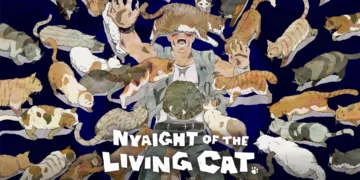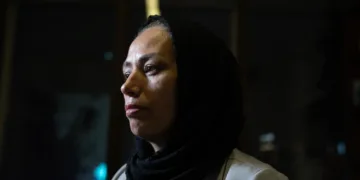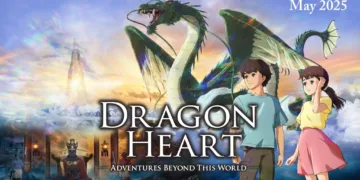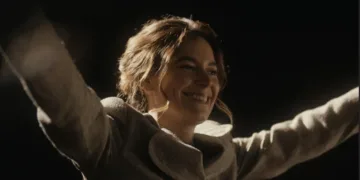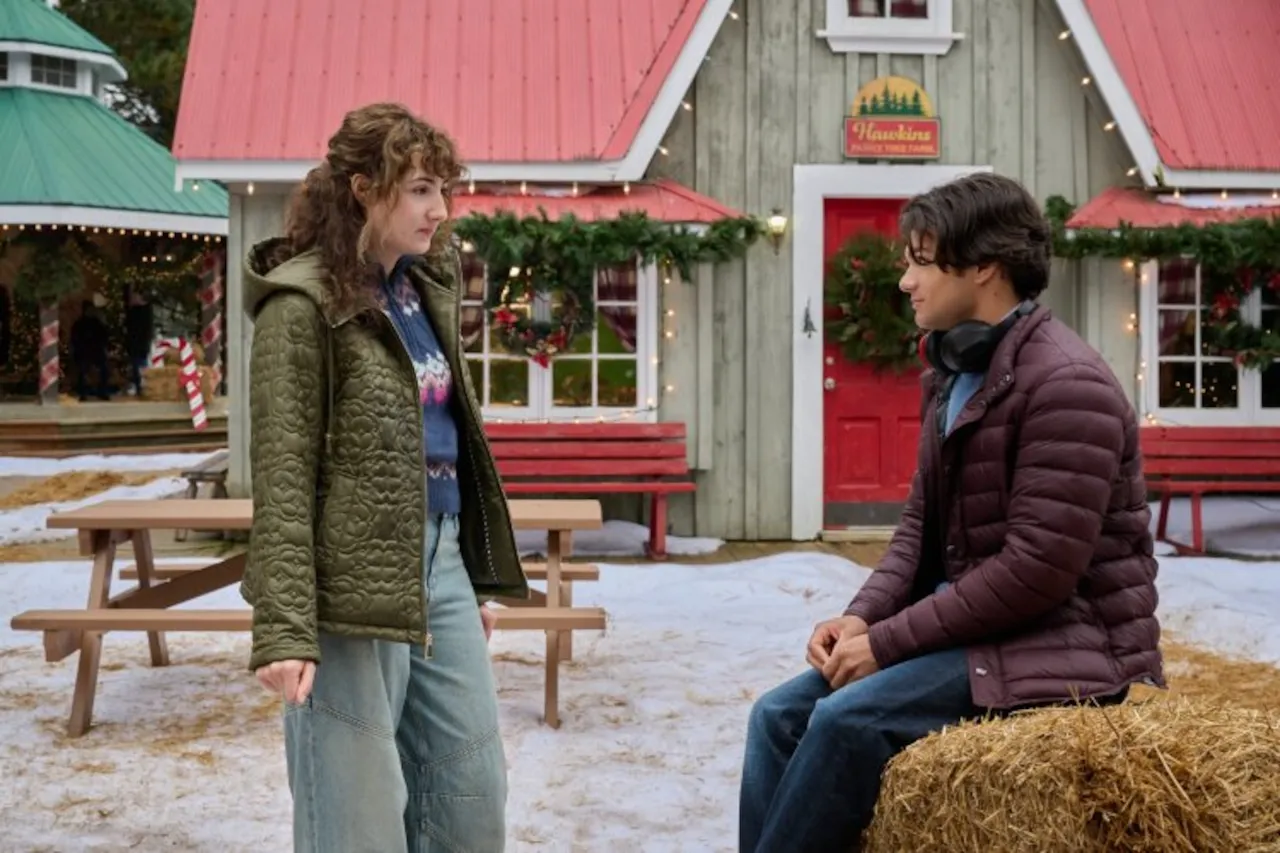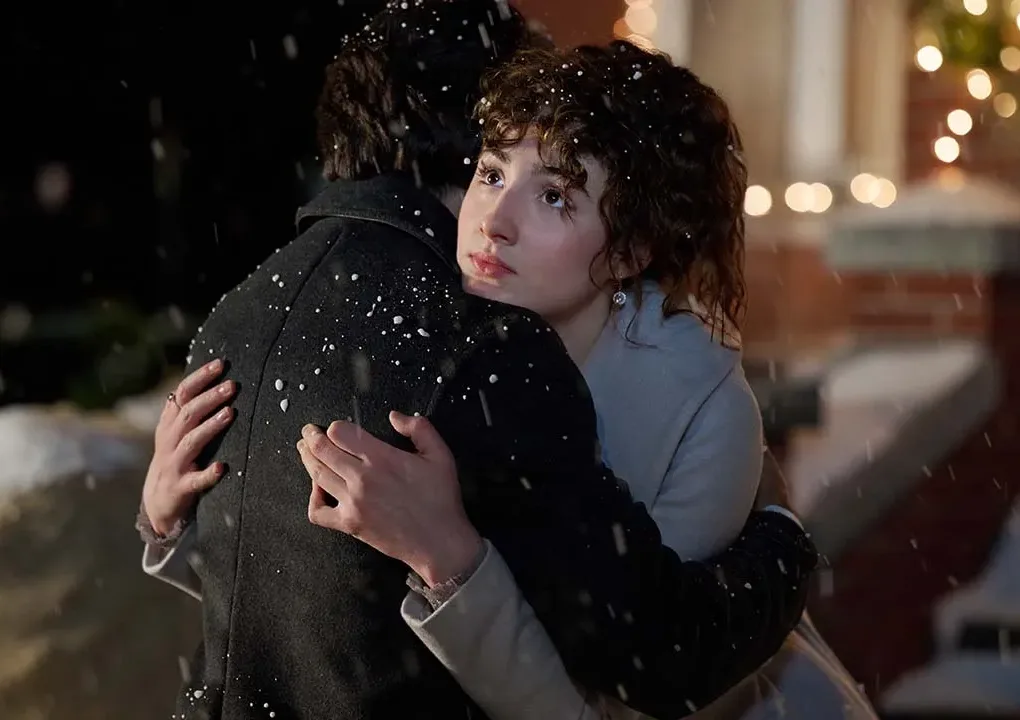In Hallmark’s latest release, A Dance in the Snow, we follow Melanie, a devoted single mother, and her autistic teenage daughter, Jenny. The film expertly navigates the complexities of their relationship as Christmas approaches, showcasing their unique difficulties and desires.
While planning a surprise holiday celebration to honour her mother, Jenny, a high school senior with dreams bigger than her little town, struggles with sensory triggers. This major plot highlights the complexities of their relationship. It emphasizes neurodiversity, an increasingly important issue in Hallmark’s expanding narrative environment.
In recent years, Hallmark has made remarkable advances toward inclusive storytelling, moving away from the formulaic tales of old. A Dance in the Snow exemplifies this transition, reflecting a broader cultural trend that strives to promote voices frequently underrepresented in mainstream media.
It embraces the idea that love and celebration can manifest in various ways, pushing traditional holiday narratives to include stories that appeal to a wide audience. This film is more than just another feel-good holiday film; it is a big step forward in representation and understanding, enabling audiences to interact with the realities of neurodivergent experiences in a heartfelt environment.
Plot Summary: Navigating the Holiday Landscape
Set against the backdrop of a picturesque, snow-dusted town during the holiday season, A Dance in the Snow transports viewers to a joyous world loaded with emotional complexity. The film introduces us to Melanie, a single mother whose life focuses on her daughter Jenny, a high school senior navigating the dual stresses of coming maturity and her own neurodivergent experience.
The holiday excitement is evident, but it is coloured by the realities of Jenny’s sensitivities—specifically, her aversion to sensory overload, which derives from a horrific childhood episode in the Snow. This setting deepens our understanding of Jenny’s decision to forgo the school’s winter ball, which resonates with anybody who has ever felt out of place in a crowded room.
The underlying conflict emerges as the narrative progresses. Both mother and daughter prepare surprise festivities for each other, unaware of the other’s intentions. Jenny rallies her friends to honour her mother by creating a sensory-friendly alternative dance in a barn.
At this venue, they may rejoice without the turmoil surrounding holiday parties. Meanwhile, Melanie and Jenny’s caring English teacher, Daniel, are quietly trying to make the school’s winter ball a more inclusive affair and pleasurable for Jenny and others like her.
This duality of intention results in a succession of misunderstandings, raising the emotional stakes. The film expertly handles these tensions, showcasing the mother and daughter’s innate love and need for recognition.
As secrets are revealed and feelings are exposed, the eventual endings feel both rewarding and real, reinforcing the film’s underlying message of communication and connection. Finally, A Dance in the Snow highlights the bittersweet essence of the holiday season, where joy and struggle coexist, reflecting a larger cultural narrative about inclusivity and understanding in our communities.
Character Analysis: Heart and Complexity in A Dance in the Snow
Melanie, portrayed with warmth and depth by Erica Cerra in A Dance in the Snow, represents the trials and achievements of motherhood in the film. Her experience as a single mother is marked by a deep devotion to understanding and supporting her daughter, Jenny. Melanie’s character arc focuses not only on navigating holiday preparations but also on her inner development.
She learns to balance her desires with the urge to instil independence in Jenny, showcasing a common dilemma among parents. The film constructs Melanie’s relationship with Daniel, Jenny’s English teacher, as a subplot that includes romantic elements but ultimately serves a larger purpose—highlighting Melanie’s journey toward self-acceptance and her recognition of the importance of her happiness.
Vanessa Burghardt’s performance as Jenny is a fascinating representation of a neurodivergent youngster. Her character has numerous problems due to her autism, but she exudes strength and emotional intelligence. The film expertly navigates her sensory triggers, particularly her aversion to the winter ball. It highlights her drive to create a celebration that remembers her mother while still meeting her needs.
Jenny’s relationship with Melanie is beautifully nuanced, demonstrating unconditional love amid irritation and misunderstanding. As she interacts with her friends, particularly Will, we watch her develop into a more confident person who wants connection and acceptance from her peers.
Characters that support the narrative, such as Daniel and Will, add important dynamics. Daniel, the well-meaning instructor, links the academic world and his students’ issues. His connection with Melanie adds depth, illustrating how mature relationships may strain familial boundaries.
Will, portrayed as a fellow neurodivergent student, provides Jenny with friendship and understanding, reflecting the importance of community in encouraging adoption. Together, these people create a tapestry of relationships that address themes of love, support, and the desire for belonging, elevating A Dance in the Snow from a holiday film to a poignant investigation of human connection.
Themes and Messages: Heartfelt Connections in A Dance in the Snow
A Dance in the Snow distinguishes itself from the Hallmark lineup by emphasizing inclusivity and representation, particularly in depicting autism and neurodivergent experiences. The film skillfully navigates Jenny’s world’s complexities, offering viewers an authentic perspective to grasp her problems.
The narrative underscores the importance of creating a sensory-friendly environment for Jenny and as a paradigm for inclusivity in society as a whole. This emphasis is especially relevant in today’s cultural milieu, as discussions about neurodiversity are becoming increasingly important. The film encourages audience empathy for Jenny’s experiences, reminding us that understanding and accommodation are critical for building acceptance.
The intimate link between Melanie and Jenny is at the film’s heart, serving as the narrative’s emotional core and moral compass. Their relationship is eloquently shown, showcasing the depth of a mother’s love and highlighting the difficulties of raising a neurodivergent child. The film depicts the delicate dance of support and independence, illustrating how love may manifest in nurturing and empowering ways. This examination of the mother and daughter bond strongly resonates, reflecting a universal reality about familial relationships and their complexities.
Furthermore, the film highlights the importance of community connection, illustrating how friendships and ties may support those confronting unique obstacles. Jenny’s encounters with her peers, particularly Will, highlight the importance of shared experiences and understanding among others who travel similar routes.
The narrative presents a holistic vision of love that goes beyond biological ties, which expertly weaves these threads of family and community together. A Dance in the Snow, with its rich thematic tapestry, not only entertains but also teaches, encouraging a better understanding of the many events that define our lives.
Cinematic Techniques: Crafting Atmosphere and Emotion in A Dance in the Snow
In A Dance in the Snow, director [insert director’s name if known] expertly orchestrates a narrative that balances emotional depth and the lightheartedness typical of holiday films. The direction is marked by a deliberate approach to character relationships, allowing the audience to form strong bonds with Melanie and Jenny.
Each scene is designed to heighten tension around the major conflict while maintaining an engaging tone that keeps viewers interested. The pacing is especially successful; moments of contemplation are effortlessly intercut with more dramatic parts, allowing for realistic character growth. This cadence reflects the ebb and flow of holiday emotions—anticipation, joy, and even anxiety—creating a relatable experience for audiences.
Visually, the film excels in creating a welcoming holiday environment. The photography evokes the pastoral charm of a small-town Christmas, using warm, welcoming lighting to heighten the emotional stakes of important scenes. Well-composed images of dazzling lights and snowy landscapes transport viewers into a joyous world.
At the same time, intimate close-ups highlight the characters’ nuanced reactions and psychological difficulties. The set design adds to this atmosphere, from the comfortable dwellings decked with decorations to the rustic appeal of the barn where Jenny and her friends prepare their alternative dance. Each element is carefully chosen to elicit sentiments of nostalgia and warmth, anchoring the story in a concrete reality.
The soundtrack is vital in heightening the film’s emotional resonance. A mix of traditional holiday songs and creative compositions provides a soundscape that emphasizes critical moments while guiding the audience along Jenny’s journey. The music serves as a narrative punctuator, reflecting the characters’ feelings and emphasizing the film’s themes of love and connection.
In many respects, the soundtrack acts as a character in its own right, mirroring the season’s moods while emphasizing the film’s central message of family and inclusivity. A Dance in the Snow, with its expert direction, pacing, and audio choices, not only entertains but leaves a lingering emotional imprint reminiscent of the best offers in current film.
Conclusion and Personal Reflection
A Dance in the Snow shines as a genuine examination of love and inclusivity, skillfully depicting the complexities of a mother-daughter relationship while sensitively tackling neurodiversity.
Its highlights are honest performances, particularly by Vanessa Burghardt, and warm, inviting photography that captures the mood of the holiday season. However, the romantic subplot feels forced on and detracts from the film’s main narrative.
Finally, this film offers a significant stride forward in the holiday genre, providing a unique perspective that resonates with modern audiences looking for more than simply traditional fare over the holiday season.
As someone who enjoys films that defy expectations, I thought A Dance in the Snow uplifting and relevant, making it a notable addition to the holiday canon.
The Review
A Dance in the Snow
A Dance in the Snow is a heartfelt exploration of family, love, and inclusivity that expertly addresses neurodiversity within a lovely holiday narrative. While its romantic storyline occasionally falls flat, the film's sincere acting and appealing ambience set it apart in the holiday genre. It strikes a delicate balance between emotional depth and festive cheer, providing audiences with a fresh perspective that resonates with current societal discussions.
PROS
- Authentic portrayal of neurodiversity.
- Strong mother-daughter relationship at the core.
- Warm, inviting cinematography that captures the holiday spirit.
CONS
- Romantic subplot feels somewhat forced.
- Some character arcs could be more developed.
- Occasional pacing issues in the narrative.






















